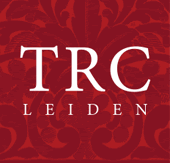The Pashtun constitute an ethnic group that lives along both sides of the modern Afghanistan-Pakistan border (the still disputed so-called Durand line of 1896). The traditional man’s outfit includes trousers (partug or shalwar) with a drawstring (partugghakh), a knee-length shirt (kamiz), and a waistcoat (waskat).
The Pashtun headgear is normally a cap (khwalay/rakhchina), often with a turban (pagray/lungay/langota) wrapped around it. In southern Afghanistan, the caps are often open in front, in imitation of the Baluchi caps. The outfit is completed with a large, rectangular blanket (chador [thin] or patu [thick]) worn over one shoulder or slung across both. The blanket is multi-functional and can be used for warmth, to sit upon and as a prayer mat.

Pashtun women tend to wear a ‘standard’ Afghan outfit made up of trousers (partug), a dress with long sleeves and full skirt (kamiz), often a waistcoat (waskat) and some form of head covering (shal, chador). The trousers are usually made out of a contrasting colour to the dress and a common colour for the trousers is mid-green. Festival dresses are usually made out of silk or velvet in rich colours, especially deep red.
During the hot summer months, many women prefer to wear printed cotton and rayon fabrics in bright colours.
A feature of Pashtun dresses, both urban and nomadic, are the beaded panels at the shoulders and along the seam line between the front bodice and the skirt of the dress. These are usually made of multi-coloured glass beads. It is also common to have roundels (gul-i pirahan or gul-i peron in Dari) on the shoulders, chest panel and waist. They are made of felt and embroidered with symbols that are related to good luck, prosperity and fertility. They are applied in pairs, and sometimes also used to decorate other objects, such as bags and horse harnesses.
Kuchi is the popular name (among outsiders) for the, mainly Pashtun nomads and semi nomads that can be found all over the country. Inside Afghanistan they are generally known as the mal dar ('having herds'). In the past, they could move freely across the borders of Afghanistan, Pakistan and India, but since the early 1960s, border restrictions have limited their movements to within Afghanistan.
 Felt coat (kosai) from Uruzgan, southern Afghanistan, 2009 (TRC 2010.0087). For more information, click on the illustration.
Felt coat (kosai) from Uruzgan, southern Afghanistan, 2009 (TRC 2010.0087). For more information, click on the illustration.
 "Dooraunee Shepherds." The man to the left is wearing a kosai. Aquatint, from Mountstuart Elphinstone 1815, Plate II, opp. p. 239.Kuchi men normally wear trousers and a knee-length shirt. These are usually in white. The traditional Kuchi headgear for men is a cap covered with a large, white turban. The outfit is completed with a large, often white blanket that is draped over one or both shoulders (sharay).
"Dooraunee Shepherds." The man to the left is wearing a kosai. Aquatint, from Mountstuart Elphinstone 1815, Plate II, opp. p. 239.Kuchi men normally wear trousers and a knee-length shirt. These are usually in white. The traditional Kuchi headgear for men is a cap covered with a large, white turban. The outfit is completed with a large, often white blanket that is draped over one or both shoulders (sharay).
An intriguing garment housed in the TRC collection is a so-called Kosai, a felt coat with long, empty sleeves, which was worn by nomads and villagers in southern Afghanistan. This example was acquired by Willem Vogelsang in Uruzgan, southern Afghanistan, in 2009.
Kuchi outfits for women are comparable to those worn by (settled) Pashtun women, but in general the colours tend to be darker. A Kuchi women's outfit traditionally includes a pair of trousers with tightly fitting ankle cuffs, a dress and a head covering of some kind.
Kuchi dresses have long and very wide sleeves, with very full skirts. The front of the bodice, skirt and sleeve hems are decorated with metallic laces that are couched down. Such dresses are also adorned with amulets, pendants, tassels and trinkets.


